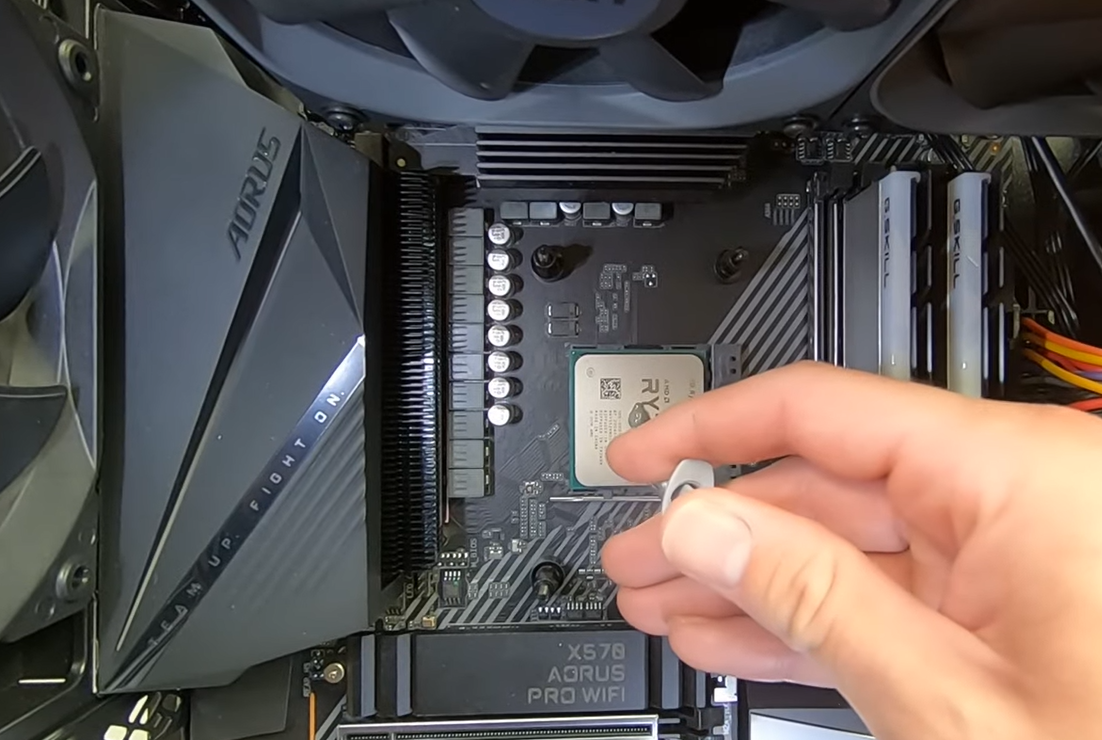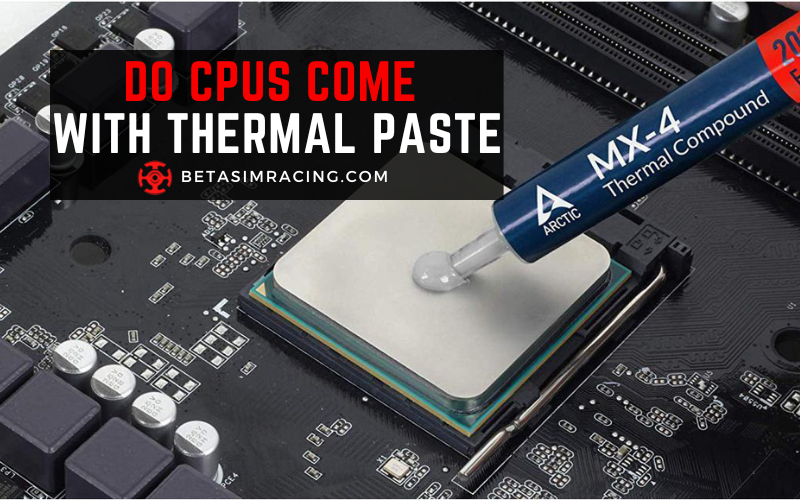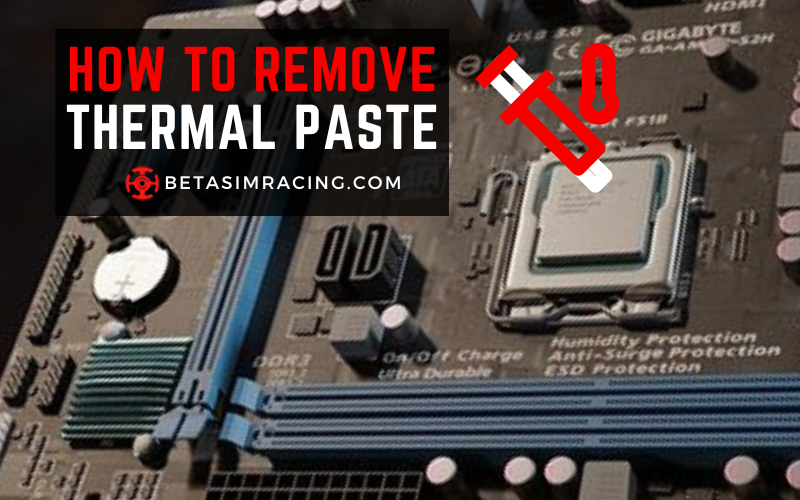Overheating can cause severe damage to your computer’s CPU, leading to system crashes, instability, and even permanent hardware damage. However, preventing CPU overheating is relatively simple and can save you a lot of hassle and money. Ensure proper ventilation by keeping your computer open, free from obstructions, and away from heat sources.
Regularly cleaning your computer will also prevent dust and debris from building up, restricting airflow, and causing overheating. Applying thermal paste between the CPU and heatsink can enhance heat transfer, reducing the chances of overheating. Monitor your CPU temperature regularly to detect any signs of overheating and upgrade your cooling system with a more efficient fan or liquid cooling system. Let’s find out how long does thermal paste last.
What Does Thermal Paste Do?
The main function of the thermal Paste is to improve the thermal transfer between the two surfaces by filling in microscopic imperfections on the CPU and heatsink, which reduces air pockets and creates a more direct path for heat to flow.

This helps to prevent the CPU from overheating by transferring heat away from it more efficiently, allowing it to operate at optimal temperatures and preventing damage to the components.
Do CPUs Come with Thermal Paste?
Most CPUs come with pre-applied thermal Paste on the heat spreader’s underside. This is typically the case for retail box versions of CPUs. However, some OEM (original equipment manufacturer) CPUs may not have a pre-applied thermal paste, or a stock heatsink and fan.

In such cases, users must purchase thermal Paste separately and apply it themselves when installing the CPU. It is always recommended to use high-quality thermal Paste for optimal performance and avoid any potential damage to the CPU.
CPUs Come with Thermal Paste
- Intel Core i9-11900K
- AMD Ryzen 9 5950X
- Intel Core i5-11600K
- AMD Ryzen 5 5600X
- Intel Core i7-11700K
CPUs Not Come with Thermal Paste
- AMD Ryzen 5 3500
- Intel Celeron G5900
- AMD Athlon 3000G
- Intel Core i3-9100F
- AMD Ryzen 3 3200G
Does Thermal Paste Expire?
The thermal Paste can expire over time, especially if not stored properly. The exact life of thermal Paste relies on the brand, type, and storage conditions. Generally, most thermal pastes can last for several years, typically 3 to 5 years, before they dry out or lose effectiveness.
However, replacing the thermal Paste every 2 to 3 years is recommended to ensure optimal performance and prevent any potential CPU damage due to overheating. It’s also important to store the thermal Paste in a cool and dry place and to seal it properly after each use to prolong its lifespan.
How to Remove Thermal Paste?
If you want to remove the thermal Paste, you can use these steps to remove it from the CPU:

- Turn off and unplug your computer or laptop.
- Remove the heatsink or fan from the CPU or GPU.
- Wipe off as much old thermal Paste as possible using a soft, lint-free cloth or paper towel.
- Apply a small amount of isopropyl alcohol (70% or higher) to a clean cloth or paper towel.
- Carefully and gently wipe off any remaining thermal paste from the surface of the CPU or GPU.
- Repeat steps 4 and step 5 until all of the thermal Paste has been removed.
- Allow the surface of the CPU or GPU to dry completely.
- Apply a small amount of new thermal Paste to the CPU’s or GPU’s center.
- Reattach the heatsink or fan and tighten the screws or clips according to the manufacturer’s instructions.
- Turn on your computer and monitor the temperature to ensure optimal performance.
How Long Does Thermal Paste Last on a GPU?
In GPU, some thermal pastes may need to be replaced sooner, especially if the GPU is used frequently for high-intensity applications like gaming or cryptocurrency mining. You must monitor the temperature of your GPU regularly and replace the thermal Paste every 2 to 3 years to ensure optimal performance and to prevent any potential damage to the components due to overheating.
How Long Does Thermal Paste Take to Dry?
The drying time of thermal Paste is based on several factors, such as the type, brand, ambient temperature, and humidity. Generally, most thermal pastes can take a few hours to dry completely, typically between 4 to 24 hours after application. However, some thermal pastes may dry faster or slower than others, and the thickness and application method can also affect the drying time.

You must check the manufacturer’s instructions or website for specific information. Like the time of the thermal Paste you are using, please avoid using the computer or turning it on until it has dried completely. This helps to ensure optimal performance and prevent any potential damage to the components due to overheating.
How Long Does Thermal Paste Last PS3 & PS4?
If the PS3 & PS4 are used frequently or exposed to high temperatures, you must replace the thermal Paste frequently. You must monitor the temperature of your PS3 & PS4 regularly and replace the thermal Paste after a couple of years. It will ensure optimal performance and prevent any mishaps to the components due to overheating.
No, it’s not OK to use a CPU without thermal paste. Thermal paste ensures proper heat transfer between the CPU and heatsink, and without it, the CPU can overheat and get damaged.
While some thermal paste substitutes are out there, they are not recommended. Toothpaste, mayonnaise, and Vaseline are not designed for use as thermal paste and can cause problems like overheating and hardware damage. It’s best to purchase a tube of thermal paste from a reputable manufacturer.
Thermal paste is made of a mixture of metal oxide, ceramic, and silicone compounds to create a substance with high thermal conductivity. It helps transfer heat away from a CPU or GPU to a heatsink, reducing temperatures and improving system stability.
Applying thermal paste with your finger is generally not recommended as it can introduce oils and other contaminants that can interfere with heat transfer. Instead, it’s best to use a plastic or metal spreader to apply a thin, even layer of paste between the CPU or GPU and the heatsink.
Thermal Paste ensures efficient heat transfer in electronic devices like GPUs, PS4s, and PS3s. The Paste can dry out over time, affecting its performance; therefore, replacing it every 3-5 years is recommended. Additionally, removing old thermal Paste before applying a new one is important to prevent any adverse effects on heat dissipation. CPUs may or may not come with pre-applied thermal Paste, so checking before purchasing is crucial. Overall, thermal Paste plays a crucial role in maintaining the health and performance of electronic devices.
Final Thought

